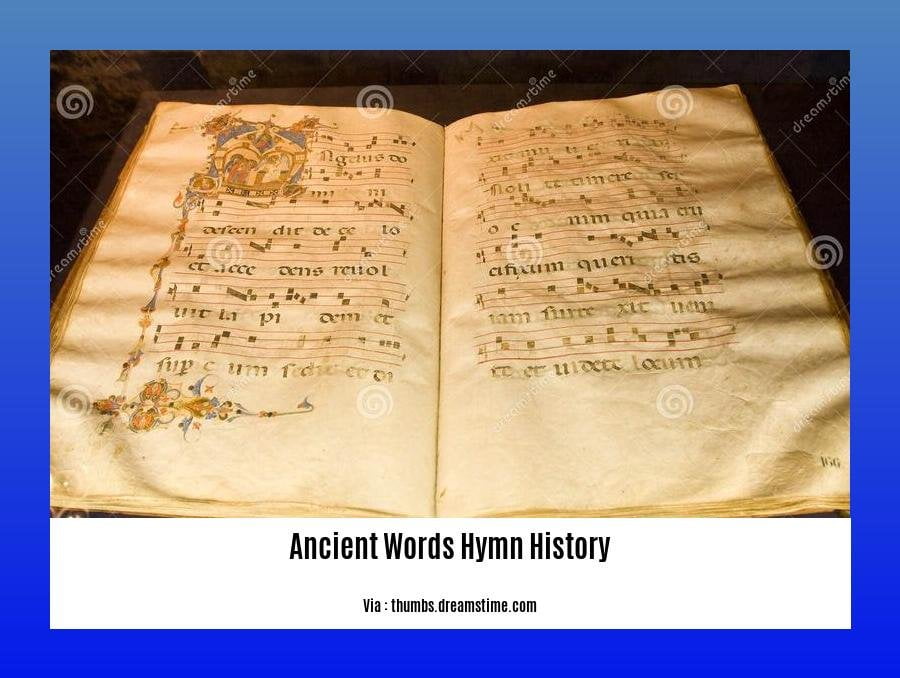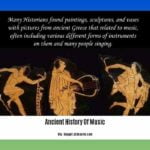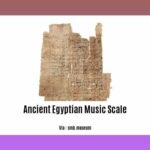Embark on a captivating journey through time as we delve into [- Ancient Words Hymn History: Unraveling the Sacred Melodies of the Past]. Discover the enchanting world of ancient hymns, where words and music intertwine to create profound expressions of faith, devotion, and cultural heritage. Prepare to be transported to a realm where melodies echo through the ages, carrying stories of civilizations, beliefs, and the human spirit.
Key Takeaways:
Ancient Words” is a Christian hymn written by Lynn DeShazo.
The hymn is designed to encourage believers to draw strength and guidance from the ancient words of scripture.
The lyrics of the hymn emphasize the enduring nature of God’s word and its relevance to our lives today.
The hymn is also known by its first line, “Holy words long preserved for our wakening.”
It is often sung during worship services and other Christian gatherings and has been recorded by various artists.
Ancient Words Hymn History: A Journey Through Time
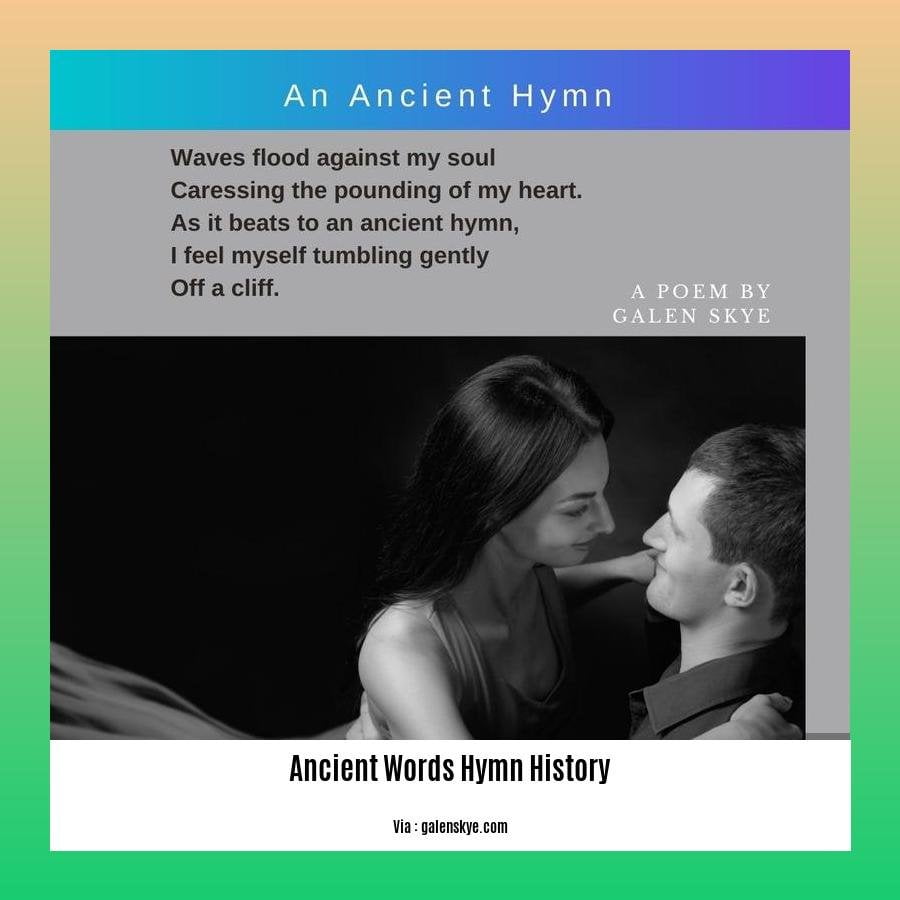
Ancient words hymn history is a captivating realm of sacred melodies, a tapestry woven with tales of faith, devotion, and cultural heritage. Embarking on this journey, we uncover the profound impact these hymns have had on history, spirituality, and human expression.
The Enduring Legacy of Ancient Hymns
Hymns, with their lyrical beauty and musical resonance, have transcended time, passing down generations and leaving an indelible mark on our collective consciousness. These sacred compositions have played a pivotal role in shaping religious practices, fostering communal bonds, and inspiring spiritual awakenings.
Unveiling the Stories Behind the Hymns
Exploring the ancient words hymn history requires a keen eye for detail and a deep appreciation for the nuances of language and melody. Scholars and historians delve into the origins of hymns, tracing their evolution through various cultures and epochs. They decipher intricate structures, unravel hidden meanings, and illuminate the context that gave rise to these timeless compositions.
Hymns as a Reflection of Faith and Belief
Hymns offer a glimpse into the hearts and minds of believers, revealing their deepest hopes, fears, and aspirations. They provide a window into the prevailing theological beliefs and spiritual practices of different eras. Through hymns, we can trace the evolution of religious thought, the rise and fall of empires, and the resilience of the human spirit in the face of adversity.
The Cultural Significance of Hymns
Hymns are not merely religious artifacts; they are also cultural treasures that reflect the values, traditions, and identities of various societies. They capture the essence of a people’s history, their struggles, their triumphs, and their collective aspirations. By studying hymns, we gain insights into the social, political, and cultural contexts that shaped their creation.
The Power of Music and Words
Hymns harness the transformative power of music and words to uplift the spirit, inspire devotion, and foster a sense of community. Their melodies linger in our minds, their lyrics resonate in our hearts, and their messages touch our souls. Hymns have the ability to evoke emotions, stir memories, and spark a profound sense of connection with the divine.
Preserving and Celebrating Hymn Heritage
In an era of rapid change and technological distractions, preserving and celebrating our hymn heritage is more important than ever. We must strive to keep these sacred melodies alive, ensuring that future generations can experience the beauty, wisdom, and spiritual nourishment that hymns offer. Through performances, recordings, and educational initiatives, we can ensure that the legacy of ancient words hymn history continues to inspire and uplift hearts for centuries to come.
Delve into the rich history and cultural significance of ancient Vietnamese symbols, unlocking the secrets of their intricate designs and profound meanings.
Explore the fascinating world of ancient Viking symbols, uncovering the stories behind their captivating runes and intricate carvings, which hold the keys to understanding the beliefs and practices of these legendary warriors.
Indulge in the captivating flavors of ancient vines Zinfandel, a wine of exceptional character and pedigree, crafted from grapes grown on ancient vines that have weathered the test of time, yielding a truly extraordinary vintage.
Hymns as Historical Documents
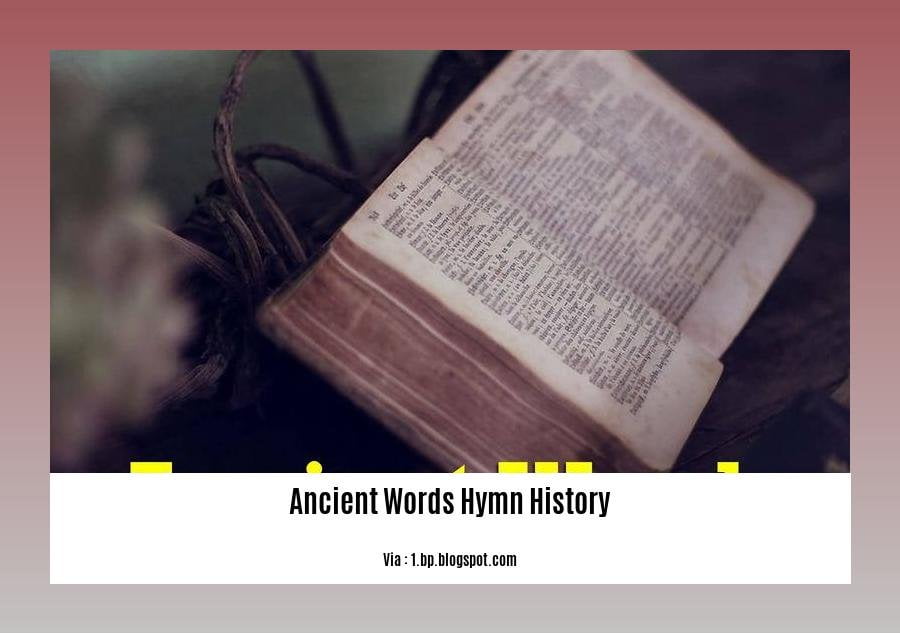
Unveiling the Past Through Melodies
Hymns, as ancient as civilizations themselves, are not mere songs but portals to the past – gateways to understanding the tapestry of our shared history. They are invaluable Hymns as Historical Documents, conveying insights into cultures, beliefs, and epochs gone by.
Key Takeaways:
- Hymns offer a window into the religious, cultural, and social realities of bygone eras.
- Studying hymns unveils the evolution of beliefs, values, and practices over time.
- Historical hymns provide context and depth to our understanding of past events.
- They reflect the struggles, aspirations, and triumphs of ancient communities.
- Hymns are tangible links to our ancestors, connecting us to their spiritual and emotional worlds.
Hymns as Mirrors of Faith
Hymns are windows to ancient spirituality, reflecting the beliefs and practices of our ancestors. They recount tales of creation, divine intervention, and the human quest for meaning. Through hymns, we witness the evolution of religious thought, the shift in theological perspectives, and the enduring human desire for connection with the divine.
Hymns as Cultural Artifacts
Hymns embody the cultural heritage of civilizations. They mirror the values, traditions, and identities of ancient societies. Whether it’s a hymn invoking a bountiful harvest, celebrating a military victory, or lamenting a tragic loss, each hymn tells a story – a story of a people and their way of life.
Hymns as Time Capsules
Hymns capture the zeitgeist of their time. They encapsulate the hopes, fears, and aspirations of ancient communities. They narrate their struggles against adversity, their celebrations of victories, and their resilience in the face of challenges. Through hymns, we hear the pulse of history, the heartbeat of generations past.
Conclusion
Hymns are not just ancient melodies; they are gateways to the past, offering a multidimensional perspective on history and culture. They are invaluable tools for historians, anthropologists, linguists, and anyone seeking to understand the tapestry of human experience.
Sources:
[1] Hymns Ancient and Modern: https://academic.oup.com/book/12481/chapter/1631784781
[2] Hymns of the Christian Church: An historical and social overview: https://www.academia.edu/37984008/Hymns_of_the_Christian_Church_An_historical_and_social_overview
Hymns and Cultural Identity: Exploring the Tapestry of Faith and Expression
Hymns and Cultural Identity
Hymns as Cultural Tapestry:
Hymns are multifaceted expressions of a culture’s religious beliefs, values, and traditions. They mirror the collective experiences, aspirations, and spiritual journeys of a community. Through hymns, cultures weave narratives of faith, history, and identity.
Hymns as Identity Markers:
Hymns serve as unique markers of cultural identity, reflecting the shared heritage, struggles, and triumphs of a people. They embody a culture’s essence, preserving and transmitting it across generations. Singing hymns fosters a sense of belonging, unity, and solidarity among the faithful.
Hymns as Historical Narratives:
Hymns often recount historical events, preserving cultural memory and providing glimpses into past lives. They encapsulate the joys, sorrows, and challenges faced by a community and serve as living reminders of their heritage.
Hymns as Cultural Ambassadors:
Hymns transcend cultural and geographical boundaries, carrying messages of faith, hope, and love to diverse audiences. They facilitate cultural exchange, fostering understanding, empathy, and unity among people from different backgrounds.
Key Takeaways:
Tapestry of Faith:
Hymns weave together diverse threads of religious beliefs, values, and traditions into a vibrant tapestry of faith.
Cultural Identity Markers:
Hymns embody cultural identity, reflecting shared heritage, experiences, and aspirations of a community.
Historical Narratives:
Hymns preserve cultural memory and recount historical events, offering insights into past lives.
Cultural Ambassadors:
Hymns transcend boundaries, carrying messages of faith and unity among diverse audiences.
Sources:
Enduring Legacy of Hymns: Divine Harmonies Echoing through Time
Hymns, like resonant melodies woven into the tapestry of human history, carry the threads of faith, devotion, and collective human experience. Their enduring legacy lies in their ability to transcend time, traversing centuries and cultures, touching hearts with their sacred messages.
Key Takeaways:
Longevity and Global Reach: Hymns have endured for millennia, serving as a ubiquitous form of religious expression across cultures, continents, and generations.
Devotional Expression: Hymns offer a powerful medium for believers to express their reverence, gratitude, and aspirations to the divine, uniting communities in shared worship.
Historical and Cultural Insights: Hymns mirror the values, beliefs, and struggles of the communities that birthed them, providing valuable insights into historical and cultural contexts.
Narrative Tapestry: Through hymns, we weave together the threads of our collective narrative, connecting past generations to present and future ones, fostering a sense of continuity and belonging.
Emotional and Spiritual Impact: Hymns’ ability to stir emotions and inspire spiritual contemplation makes them a transformative force, shaping individuals’ inner landscapes and fostering a deeper connection with the divine.
Citation:
- Hymns Ancient & Modern
- The History of Hymns Ancient and Modern
FAQ
Q1: What is the significance of ancient hymns in Christian history?
A1: Ancient hymns hold immense significance in Christian history, serving as powerful expressions of devotion, praise, and thanksgiving to God. They provide a glimpse into the spiritual experiences and beliefs of early Christian communities, offering insights into their understanding of faith and relationship with the divine.
Q2: How do ancient hymns reflect the cultural and historical context of their time?
A2: Ancient hymns often mirror the cultural and historical context in which they were composed. They reflect the social, political, and religious circumstances of the period, shedding light on the challenges, hopes, and aspirations of the people. By analyzing the lyrics and melodies of these hymns, we can gain a deeper understanding of the cultural milieu that shaped them.
Q3: What are some of the common themes and motifs found in ancient hymns?
A3: Ancient hymns frequently explore universal themes such as praise and worship of God, the search for divine guidance and protection, expressions of gratitude, and reflections on the human condition. They often employ rich symbolism, metaphors, and imagery to convey profound spiritual truths and connect with the hearts of believers.
Q4: How have ancient hymns influenced modern Christian music and worship practices?
A4: Ancient hymns have had a profound impact on the development of modern Christian music and worship practices. Many contemporary hymns and worship songs draw inspiration from the melodies, harmonies, and lyrical content of ancient hymns. The enduring legacy of these hymns continues to shape the way Christians express their faith through music and worship.
Q5: What are some of the challenges faced in preserving and interpreting ancient hymns?
A5: Preserving and interpreting ancient hymns can present several challenges. These include the scarcity of written records, the fragmentary nature of surviving manuscripts, and the linguistic and cultural barriers that may hinder understanding. Additionally, the evolution of musical styles and changing interpretations over time can complicate efforts to accurately recreate and perform these ancient melodies.
